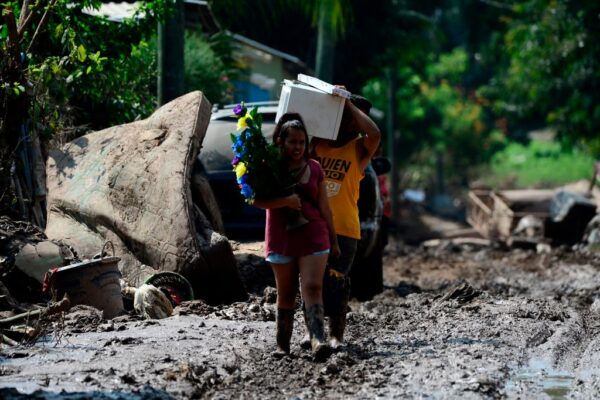Unearthed today: A storm hits

I’m reading about… Hurricane Iota
In a clear sign of the accelerating climate emergency; the coast of Nicaragua has just experienced a direct hit by Hurricane Iota, one of the strongest storms in recorded history — less than two weeks after a direct hit by Hurricane Eta, also one of the strongest storms in recorded history.
Iota has hit the same communities whose lives were devastated by Eta just weeks ago. Cairo Jarquin, Nicaragua emergency response project manager for Catholic Relief Services, had just visited Bilwi and smaller coastal communities Friday.
In Wawa Bar, Jarquin said he found “total destruction,” CBS reports. People had been working furiously to put roofs back over their families’ heads, but now Iota threatened to take what was left.
“The little that remained standing could be razed,” Jarquin said. There were other communities farther inland that he wasn’t even able to reach due to the condition of roads. He said he heard that Wawa Bar was evacuated again Saturday.
“Central America and the Yucatan have endured more strong hurricanes in the past two months (Delta, Eta, Iota) than in the previous ten years combined“, writes climate scientist Eric Holthaus.
“The trauma of rapidly-intensifying hurricanes can’t be underestimated for those in their path. Imagine going to bed with a tropical storm, and waking up to a Category 4 just hours from landfall. It inhibits our ability to prepare, and it hampers government-led evacuations.”
The storms could impact on millions of people and wreck havoc with already fragile economies.
“The overlapping tragedies of COVID-19 (which the hurricanes could worsen), an extractive and colonial economic relationship with regional governments, and the climate emergency have pushed largely Indigenous subsistence farmers into severe food insecurity,” Holthaus adds noting the devastation should add to calls for indigenous land rights.
The news comes as the International Red Cross and Red Crescent warned that the number of disasters caused by extreme weather and climate-related events is surging – but funding is not getting to where it is needed most.
“Cases of floods, storms and heatwaves per decade have increased by nearly 35 per cent since the 1990s, affecting 1.7 billion people over the last 10 years and killing some 410,000,” Reuters reports.
“If you’d like to help directly support hurricane recovery in the Indigenous regions of Nicaragua and Honduras, in a way that’s directed by the communities themselves, please support the Alianza Mesoamericana de Pueblos y Bosques,” writes Holthaus.
Three things you need to know
Trump moves to hobble Biden’s environment agenda: The Trump administration is asking oil and gas firms to pick spots where they want to drill in Alaska’s Arctic National Wildlife Refuge as it races to lock in drilling rights before Biden takes office, the Post reports. And that’s not all; “officials are reviewing measures that would lift criminal penalties for accidentally killing migratory birds, lock in existing air pollution limits and make it harder to impose new environmental safeguards,” Bloomberg notes. The Energy Department is also trying to finish regulations weakening energy efficiency standards for furnaces and other appliances whilst the EPA is close to finalizing two measures that could make it harder to impose pollution curbs. One would block the agency from relying on scientific research that isn’t or can’t be made public. Another would limit how the agency calculates the costs and benefits of future regulations. The news comes as Biden is pushed to follow the EU and UK in applying deforestation conditions to US supply chains.
UK prepares for a flurry of small to medium climate boasts: The government is set to invest several hundred million pounds in carbon capture and storage technology as part of its action plan to tackle climate change, ITV reports. The FT, meanwhile, focuses on the UK’s planned ‘big bet’ on Hydrogen whilst Sky reports that nature has been “utterly neglected” as a way to tackle climate change, according to climate minister Zac Goldsmith.
EU plans to increase offshore windfarm capacity by 250%: The capacity of the EU’s offshore windfarms in the North Sea, the Baltic, the Atlantic, the Mediterranean and the Black Sea will be increased by 250%, under a draft plan drawn up by the European commission.

